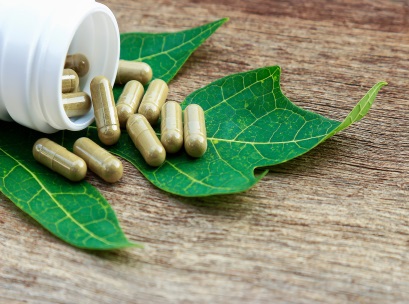By Raphaelle O’CONNOR, PhD
Immunity remains the hot topic of the moment as we have all realised the true importance our health plays in global pandemics such as the one we currently find ourselves in. Public health and hygiene practices during Covid have been reiterating the importance of hand-washing and covering our mouths when we cough to prevent the spread of infections, however, in addition to this, the role nutrition plays in building a strong immune system has been well-researched and is an area that we, as a global population, can look to improve moving forward so as to try to avoid a repeat of this scale of infection as much as possible.
My previous article looked at the role of adaptogens, bioactives and natural ingredients in immunity which you can read here if you missed it. This article, however, will analyse a different approach to the topic and focus on gut and digestive health, which has become another topic of interest in the food and wellness culture over the last few years.
If you type ‘gut health’ into Google, you will find pages upon pages of articles, blogs, and other written pieces with titles like “how to improve your gut health”, “what to eat for good gut health”, or “how can I get a healthy gut”. The term ‘gut health’ has also increased dramatically, according to Google Trends, over the past five years as illustrated in the graph below. The highest peak occurred this year mid-January and is peaking again this month (May 2020).

We can also see when we analyse in more detail the specific countries that have shown the highest interest in the term.

When topics like this start becoming popular on a consumer level, it is then up to food and beverage manufacturers to keep up with the trend and demand that is ultimately created from these online discussions.
There is a lot of information out there from a consumer perspective on how to improve your gut health, so let’s examine this from a manufacturer’s perspective to better understand how we can create products that not only satisfy consumer demand for improved gut health but do so in a cost-effective and sustainable way.
The first thing to note when creating products for this industry is that there will be a certain level of consumer education that you will need to incorporate into your marketing and communications. While this is something that will come later in the process, you do need to think about it in the beginning when considering packaging, claims, and USP’s. There is a lot of information out there about gut health but also a lot of misinformation, so you want to create a product (range) that points consumers in the right direction.
When we dive further into ingredients, there are almost infinite possibilities of what you want your product to include, however, probiotics and prebiotics (or synbiotics – a mixture of both) are a very good place to start. Probiotics have been shown to benefit both innate and adaptive immune responses of the host and can also strengthen the gut epithelial barrier through a number of ways including inhibiting apoptosis and promoting the survival of intestinal epithelial cells [1].
We have seen this in the influx of new products hitting our shelves worldwide in recent years, such as apple cider vinegar shots, kombucha, fu-tsai, tempeh and miso soup which are all traditional fermented foods said to strengthen the gut. That being said, according to Mintel, while the number of food and drink immunity-boosting products are increasing, the growth is slow in comparison to supplements. [3] This tells us that there is still plenty of room for growth from the food and beverage side in the ‘gut health’ and ‘immune-supporting’ space.
Bord Bia [4] references a new area of ‘biotics’ in their Functional Foods playbook that taps into the gut-brain connection, known as psychobiotics and postbiotics. It’s an area that brands and manufacturers have not really taken full advantage of yet but could be the next logical move alongside the original pro/pre-biotics which consumers are already aware of.
While it would be ideal to be able to get all of these benefits from food sources alone, it is not always realistic for the average consumer. This creates an opportunity for the dietary supplement area as well. As consumers demand more convenience and personalised nutrition strategies, we can see that there is a strong place for both functional food products and supplements in this space. Functional products are able to provide our bodies with multiple benefits simultaneously, and I believe that they are a very powerful and relevant addition to the global food industry today and in the near future.
REFERENCES
[1] Oregon State University, 2020. Overview of the Immune System.
[2] Philip C. Calder, Anitra C. Carr, et al., 2020. Optimal Nutritional Status for a Well-Functioning Immune System is an Important Factor to Protect Against Viral Infections.
[3] Bord Bia, 2020. Healthy Growth for Functional Foods.
[4] Bord Bia, 2019. Functional Food & Beverage Innovation Playbook.
[5] Angélica T. Vieira,1,* Mauro M. Teixeira et. al., 2020. The Role of Probiotics and Prebiotics in Inducing Gut Immunity.




No comments! Be the first commenter?